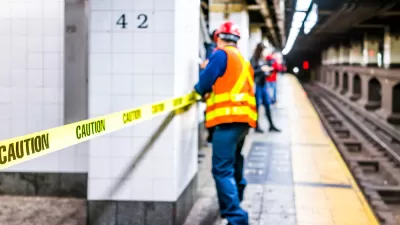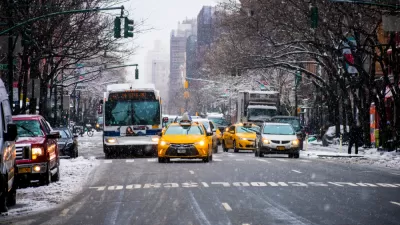A series of federal relief funding in 2020 and 2021 helped the New York MTA keep its head above water over the past three years, but the funding is running out and the books still have to be balanced for a post-pandemic world.

The New York Metropolitan Transportation Authority (MTA) took initial steps toward addressing its ongoing fiscal crisis—a persistent theme since the outset of the pandemic that has taken on new urgency without any large-scale relief packages, such as the Covid Relief Act of 2020, on the horizon. According to an article by Steve Bittenbender for the Center Square, the MTA is facing a $11.4 billion shortfall over the next four years.
“With just $5.65 billion in federal COVID-19 relief funding remaining, and ridership still lagging from pre-pandemic levels, the state agency that oversees mass transit in the New York City area is looking at a mix of cost saving measures and additional revenue streams to tackle the shortfalls it expects through the 2026 fiscal year,” reports Bittenbender. The MTA’s budget plan was made public during a presentation to the board at the end of November.
The MTA will still need help to balance the books, however. “Part of that plan is the assumption of $600 million more in government aid to help cover the shortfall for the 2023 fiscal year,” reports Bittenbender.
As reported by Jose Martinez for The City, riders might end up covering some of the budget deficit as well. “On the subways and buses, that could mean a $2.90 fare in 2023 and one that hits $3.05 by 2025,” according to Martinez. The MTA last raised fares in April 2019.
FULL STORY: New York transit to address $11.4 billion budget deficit

Planetizen Federal Action Tracker
A weekly monitor of how Trump’s orders and actions are impacting planners and planning in America.

Congressman Proposes Bill to Rename DC Metro “Trump Train”
The Make Autorail Great Again Act would withhold federal funding to the system until the Washington Metropolitan Area Transit Authority (WMATA), rebrands as the Washington Metropolitan Authority for Greater Access (WMAGA).

The Simple Legislative Tool Transforming Vacant Downtowns
In California, Michigan and Georgia, an easy win is bringing dollars — and delight — back to city centers.

The States Losing Rural Delivery Rooms at an Alarming Pace
In some states, as few as 9% of rural hospitals still deliver babies. As a result, rising pre-term births, no adequate pre-term care and "harrowing" close calls are a growing reality.

The Small South Asian Republic Going all in on EVs
Thanks to one simple policy change less than five years ago, 65% of new cars in this Himalayan country are now electric.

DC Backpedals on Bike Lane Protection, Swaps Barriers for Paint
Citing aesthetic concerns, the city is removing the concrete barriers and flexposts that once separated Arizona Avenue cyclists from motor vehicles.
Urban Design for Planners 1: Software Tools
This six-course series explores essential urban design concepts using open source software and equips planners with the tools they need to participate fully in the urban design process.
Planning for Universal Design
Learn the tools for implementing Universal Design in planning regulations.
Smith Gee Studio
City of Charlotte
City of Camden Redevelopment Agency
City of Astoria
Transportation Research & Education Center (TREC) at Portland State University
US High Speed Rail Association
City of Camden Redevelopment Agency
Municipality of Princeton (NJ)





























